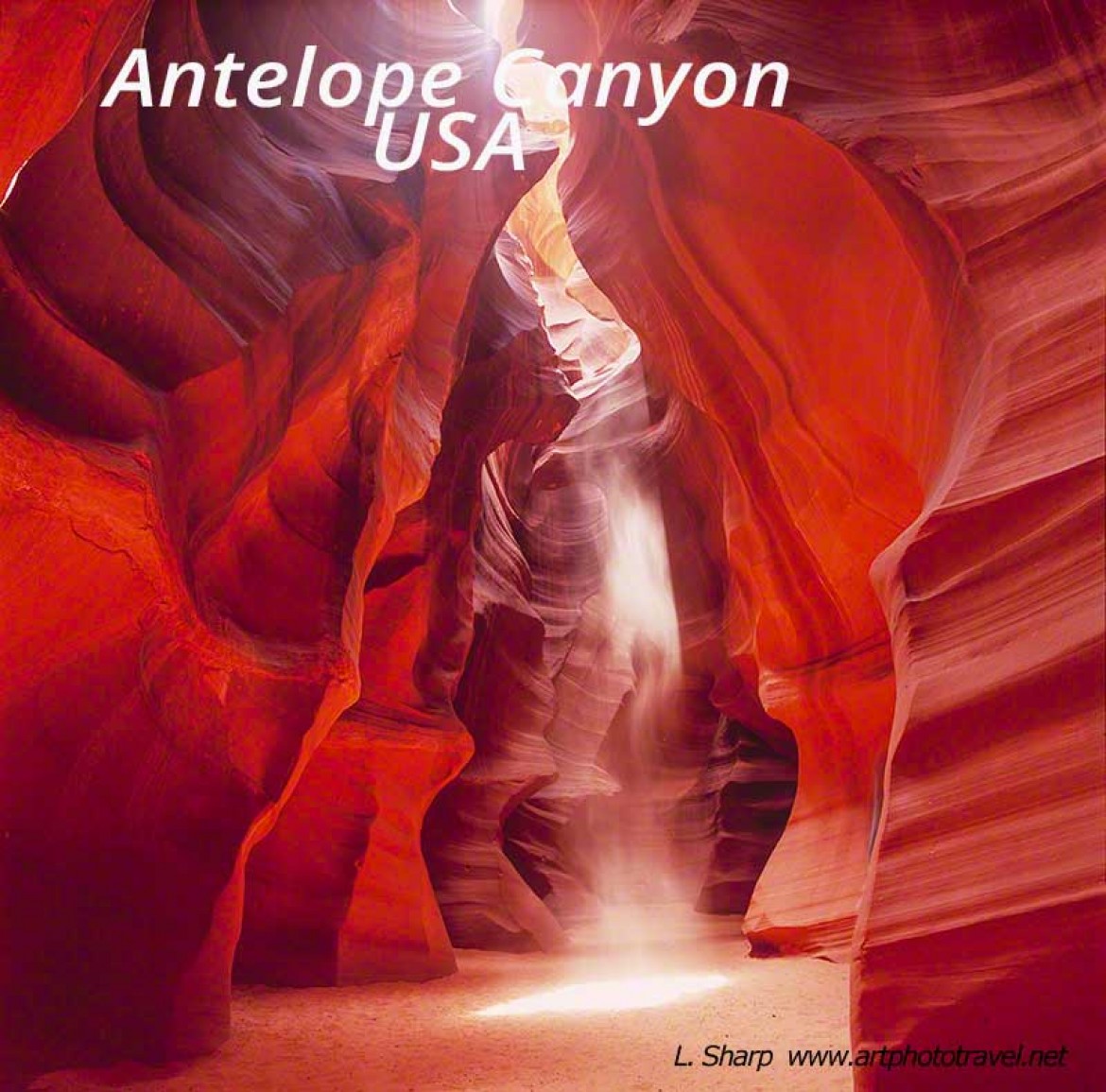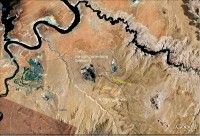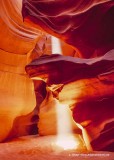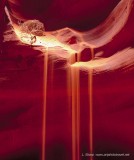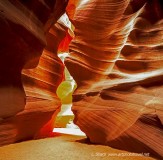Antelope Canyon Arizona
Upper Antelope Canyon
As a photographer I have a sort of love-hate attitude towards Upper Antelope Canyon (known by the Navaho as Tse’ Bighanilini). At its best it is a spiritual and an amazing place, but when it is busy with jostling crowds, it can be a nightmare.
It is a relatively compact site consisting of a main cathedral like chamber below ground and narrow slot canyons that extend for about 100 metres. The main features are the sensual serpentine shaped walls of banded rock which glow deep red to yellow as the rays of the sun scatter through the narrow passages,and additionally in summer the searing shaft of sunlight which penetrates the main chamber during mid-day.
The private gate to Antelope canyon is located just beyond the Navajo Generating Station on highway 98 some 6 km from Page, Arizona (see Antelope Canyon map Fig1). The landscape leading to the canyon is harsh and non-descript.
Some observations for photographing Upper Antelope Canyon.
♦The track to Antelope canyon is gated and visitors must be accompanied by authorized guides.
♦The maximum time per photographer is 2 hours per day.
♦There are special photographic tours of 2 hours in the canyon (2.5 hours total from Page) that are run for photographers. These have less people per group and the guide will clear the main chamber of other visitors for a short time, so photographs can be taken.
♦Photographic tours are run by; Overland canyon tours depart Page 10:15am; http://www.overlandcanyontours.com 8 persons maximum. Antelope Canyon tours: http://www.antelopecanyon.com/ 12 persons max. depart Page 11:30am arrive canyon noon. Antelope Slot Canyon tours depart Page 10:30am; http://www.antelopeslotcanyon.com.
♦The light beam lasts for 1-2 hours (mid-day summer), but if the chamber is crowded you will probably not be able to photograph for this length of time as you will be asked to move to give time to other groups. So you need to plan ahead as to what set up you will use.
♦The floor of the main chamber is soft as it is covered in sand, so there is no problem in kneeling if desired or if it becomes necessary.
♦A tripod and a remote release cable are important as exposures are long.
♦ A small penlight is useful as the chamber is dark.
♦A suitable lens for the light shaft in the main chamber is a 16-35mm zoom (35mm full frame).
♦Use manual focus and manual exposure as the beam is ephemeral. Also shoot RAW for fine detail.
♦A starting exposure is 8 sec, F11, 200ASA. Once correct exposure is found bracket either side as the correct exposure for this landscape is in the eyes of the beholder.
♦Don’t change lens if you can help it as there is silica dust in the air. In fact the guide will throw fine sand into the air to make the light shaft visible. You can also get a helper out of camera view to throw some sand up to keep the beam visible.
♦If the canyon is crowded, the time to photograph the beam without obstruction is short, notwithstanding that the guides will cooperate to keep other visitors out of view of the cameras.
♦The opportunity exists to go more than once.


